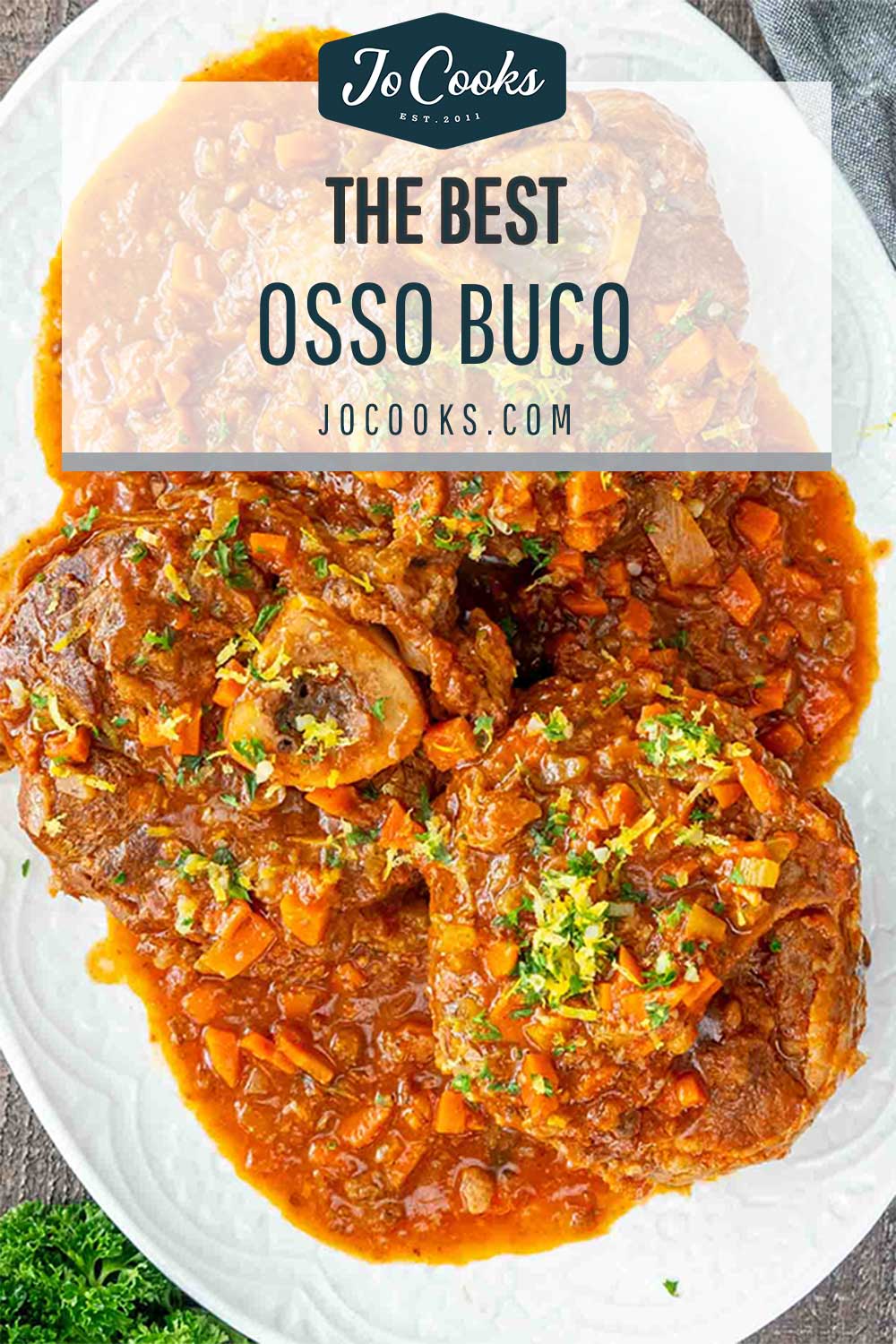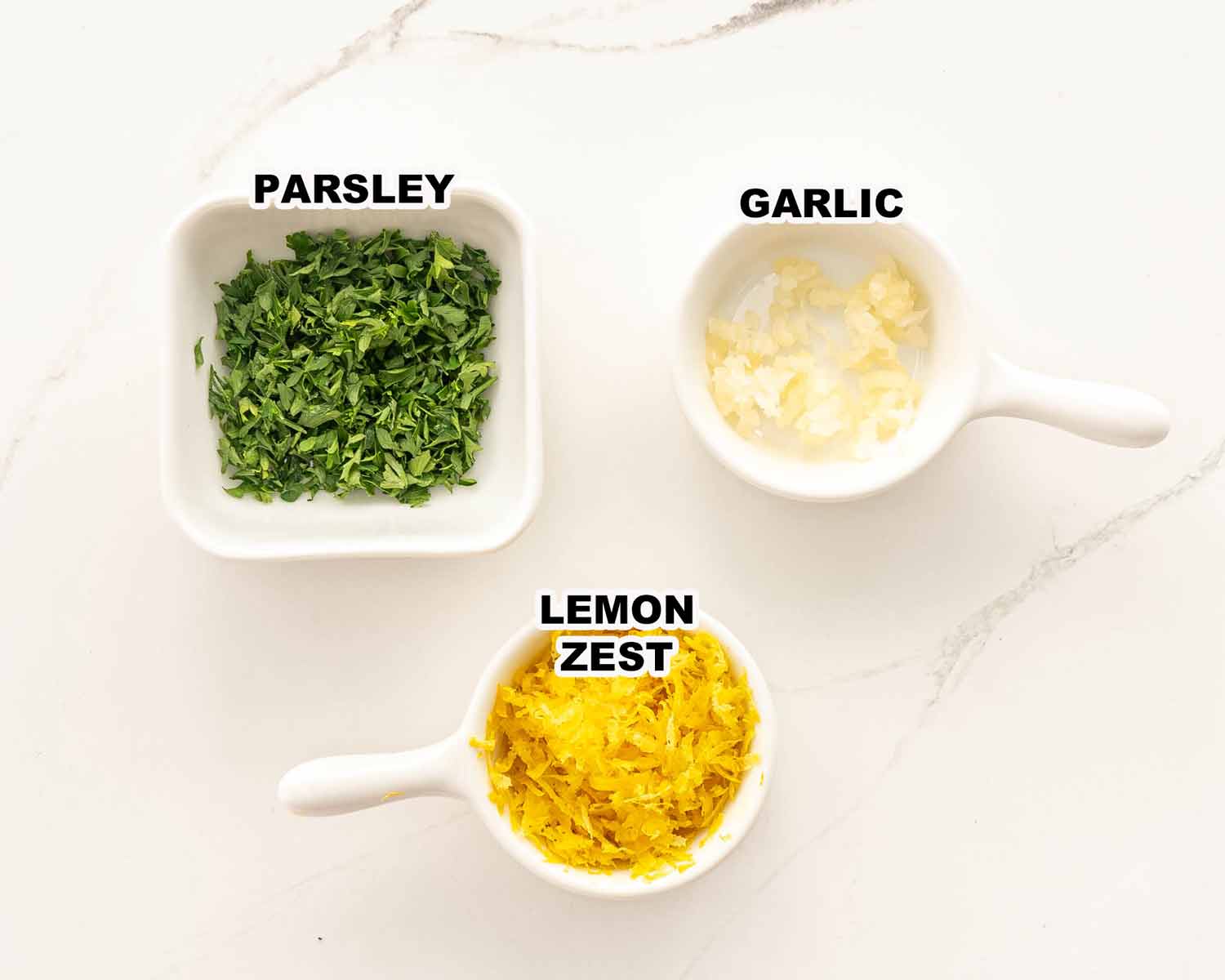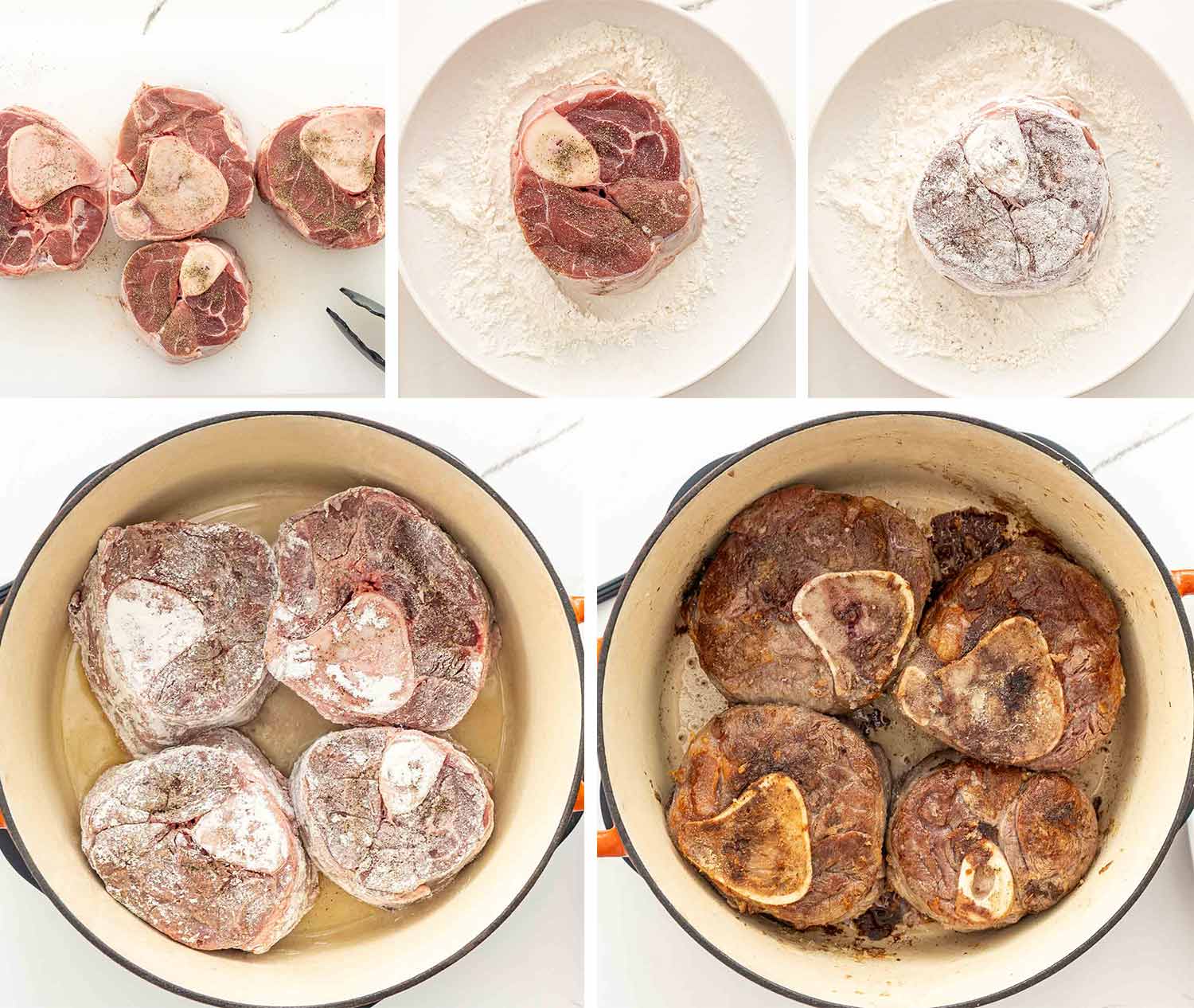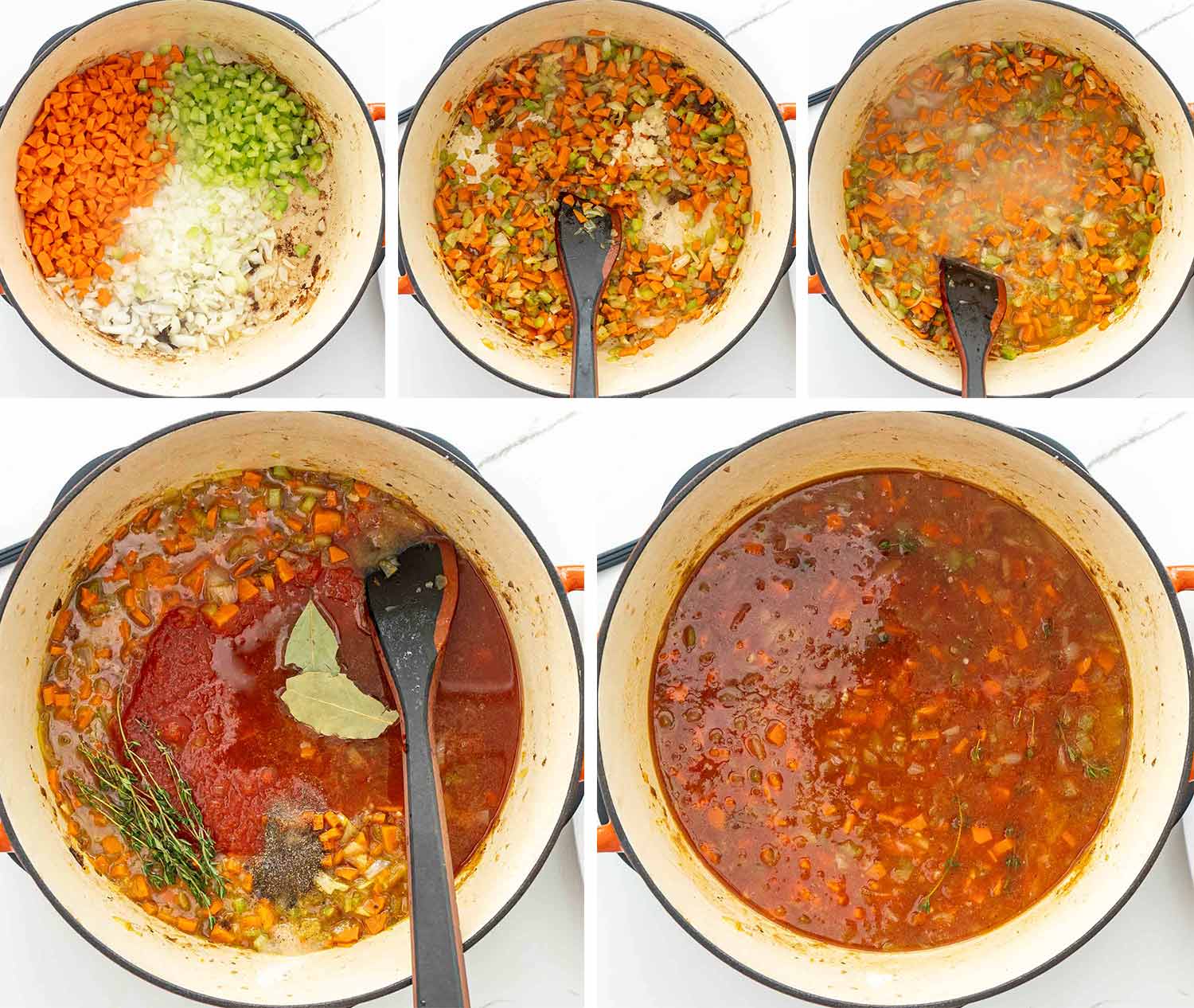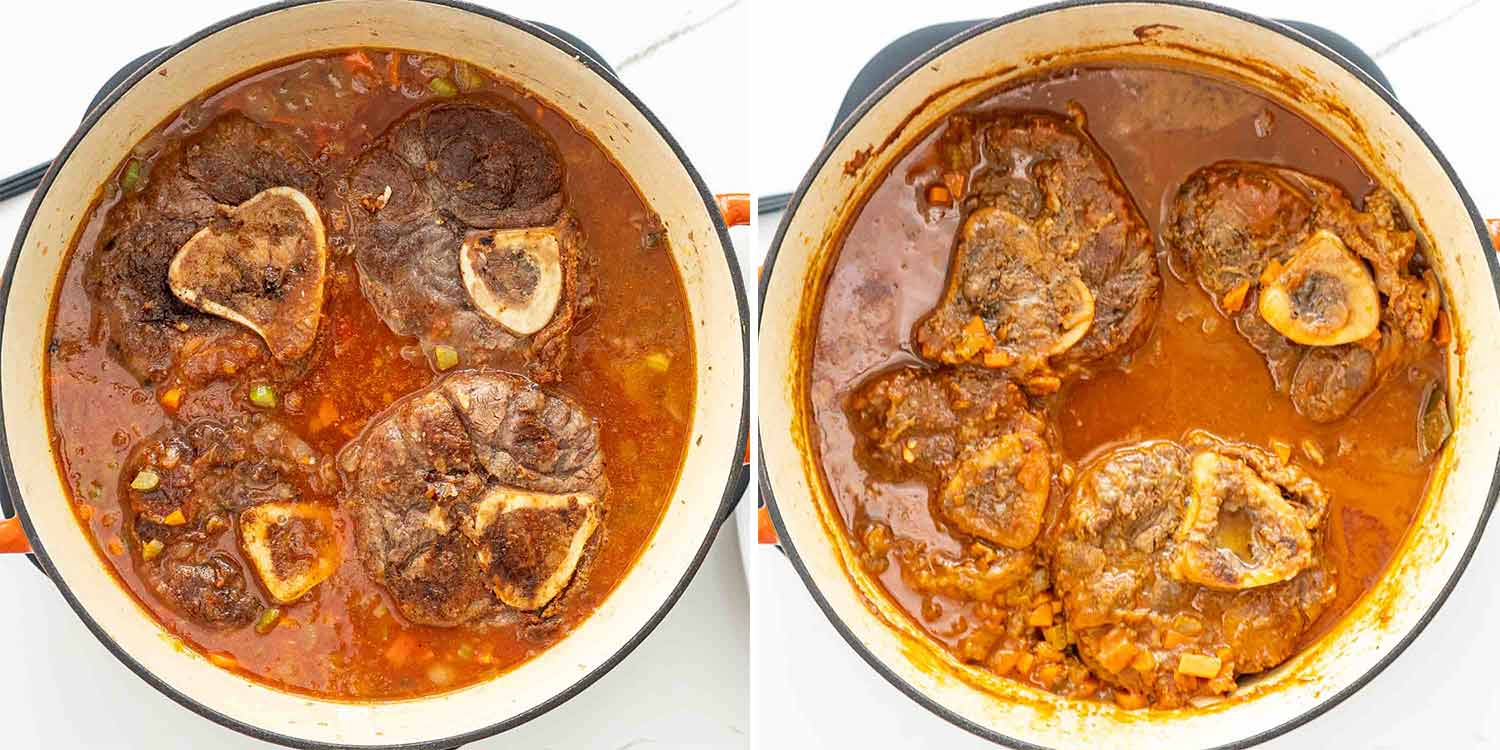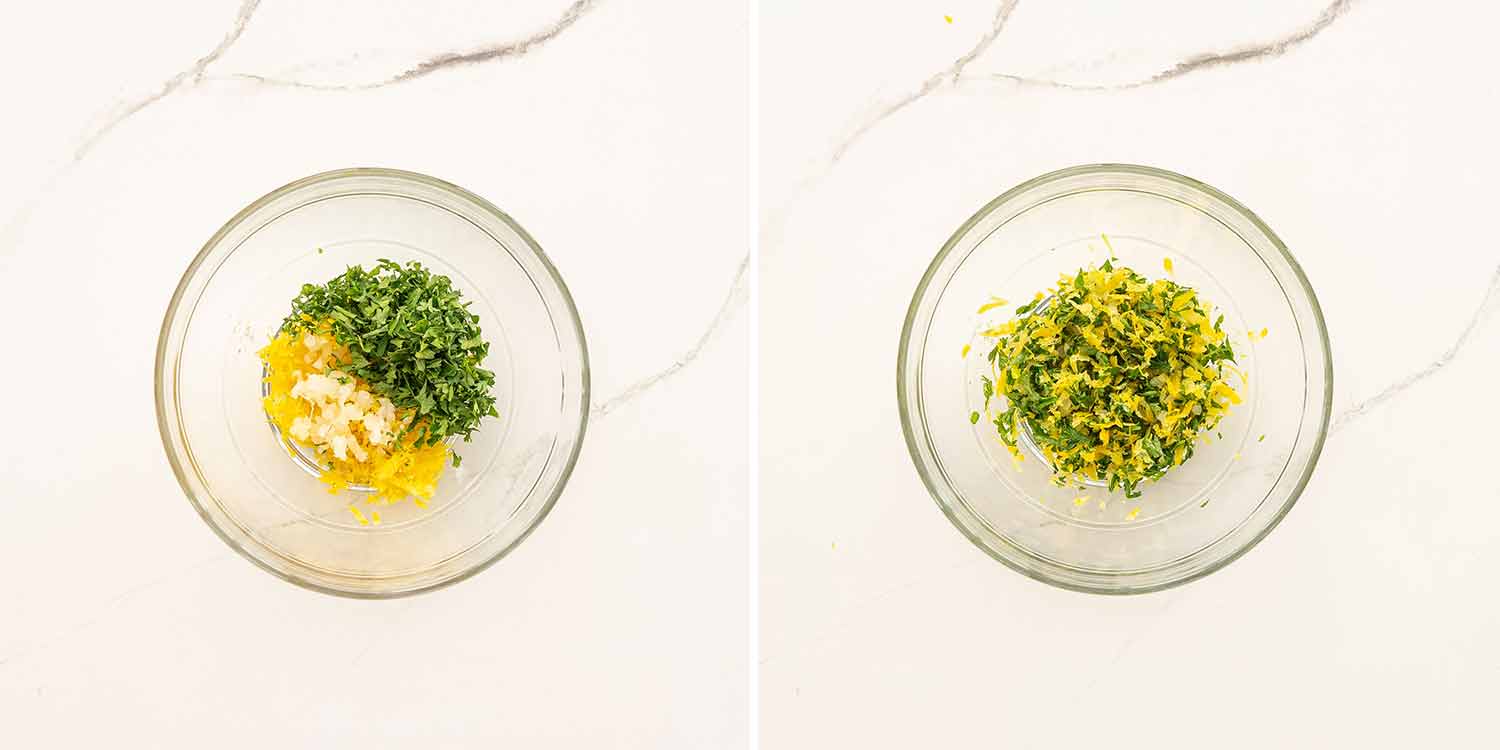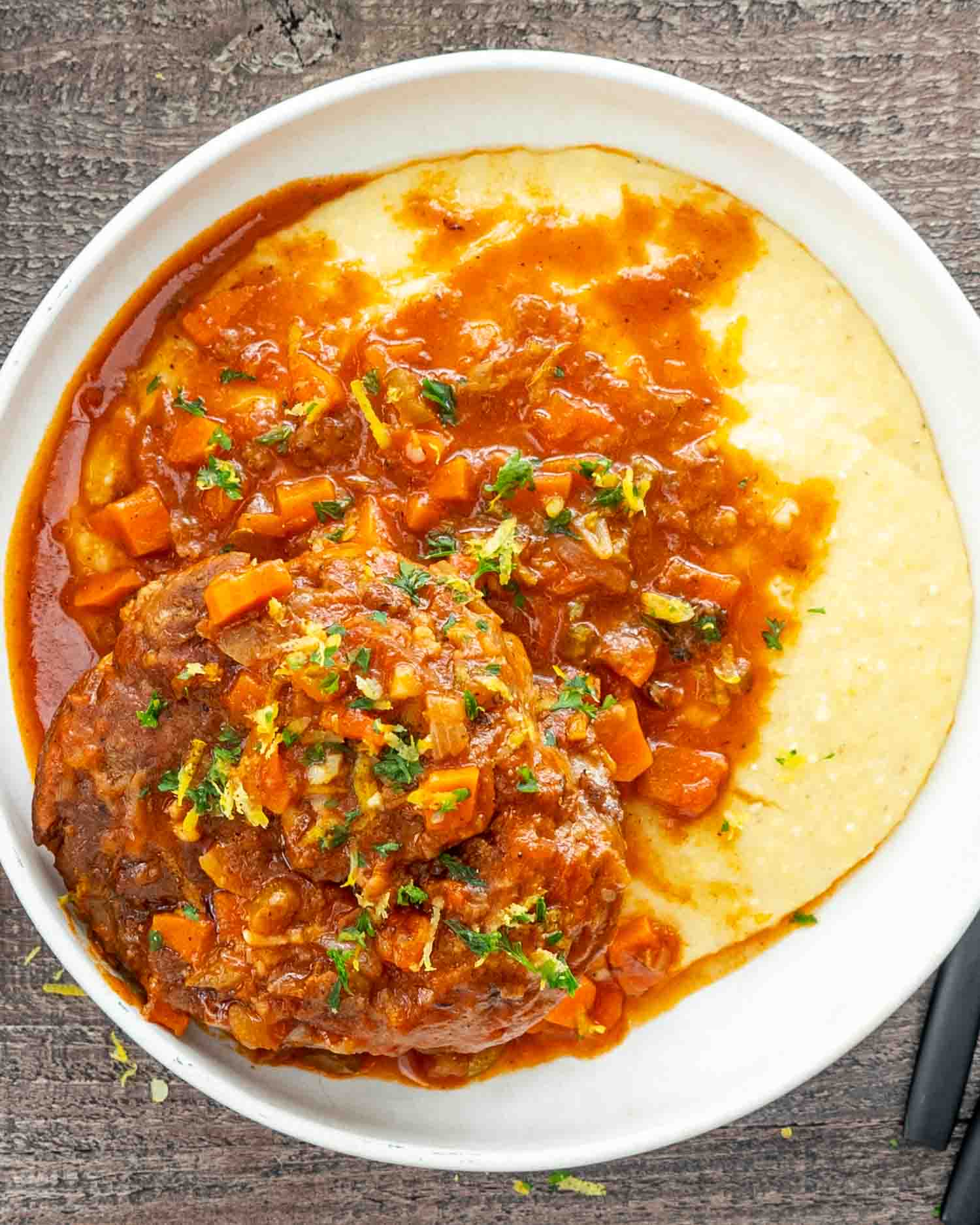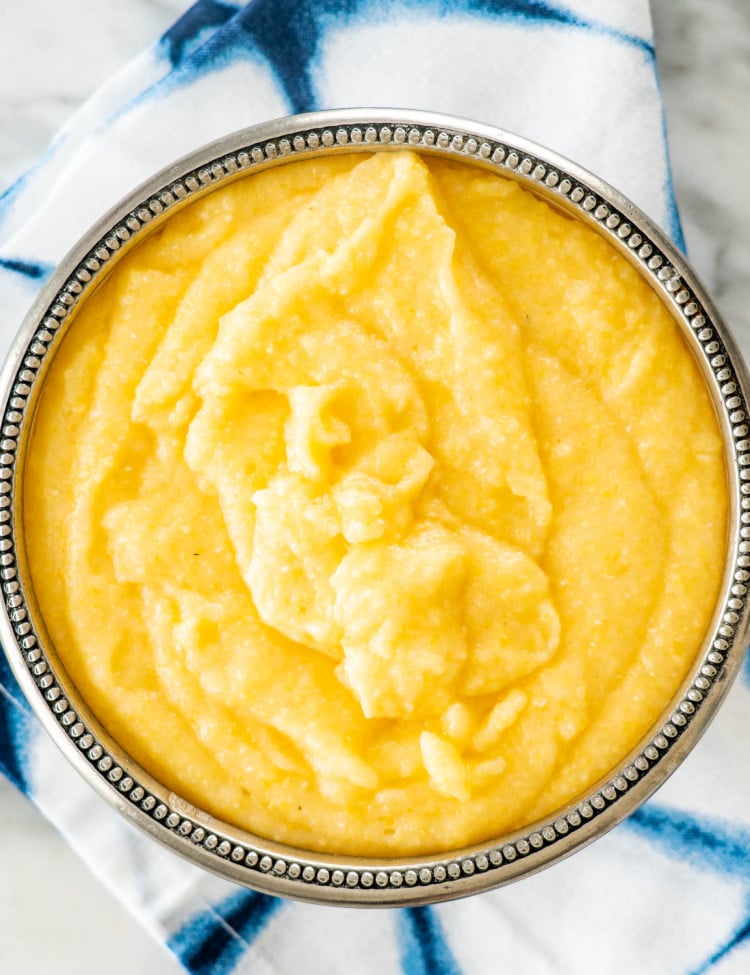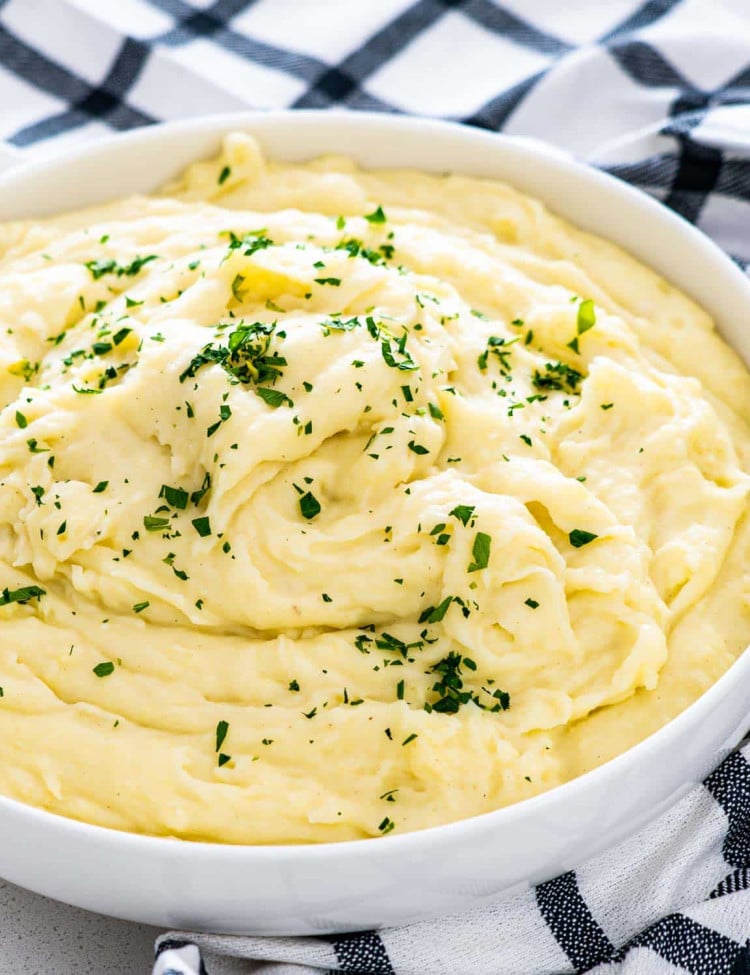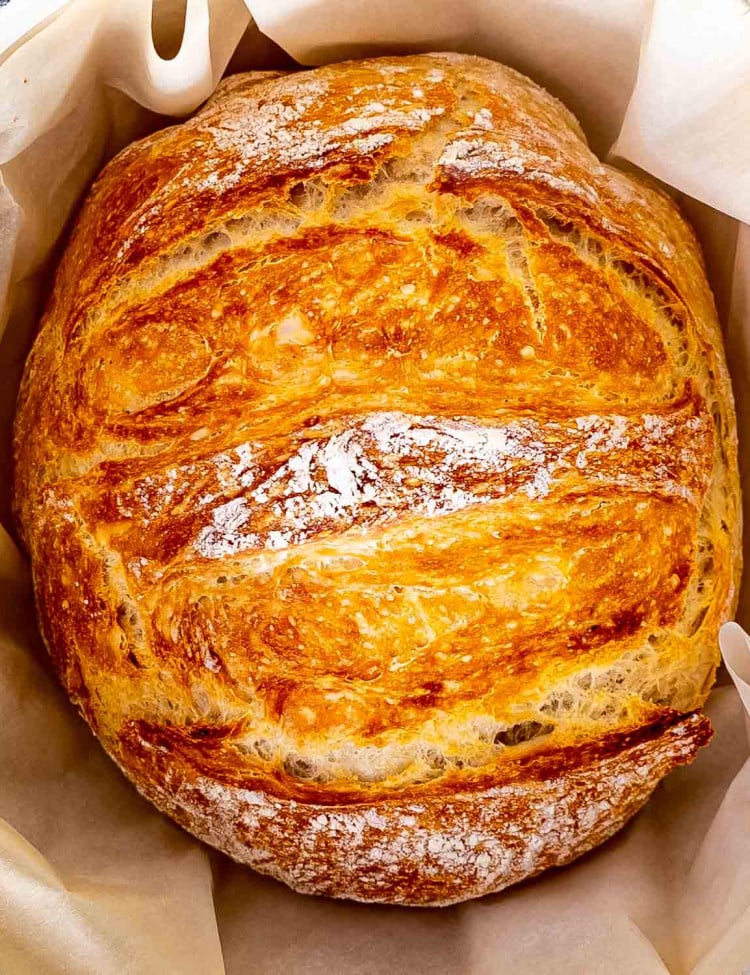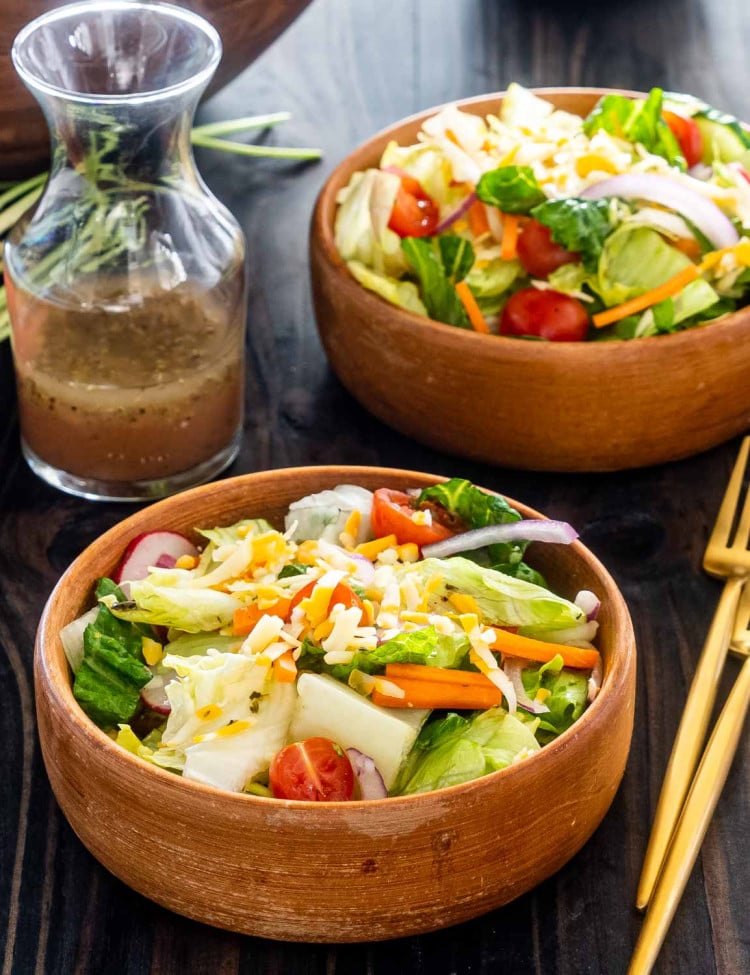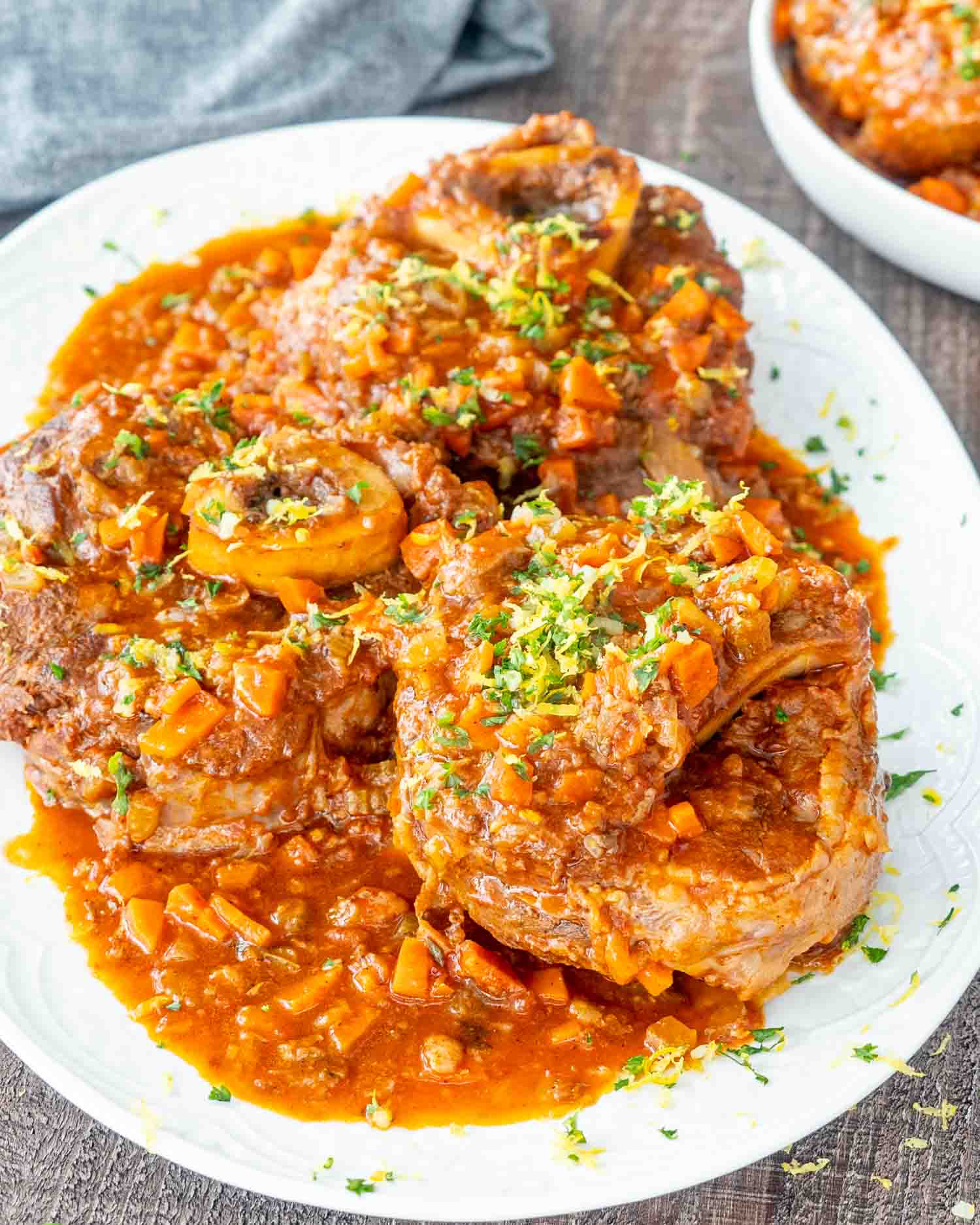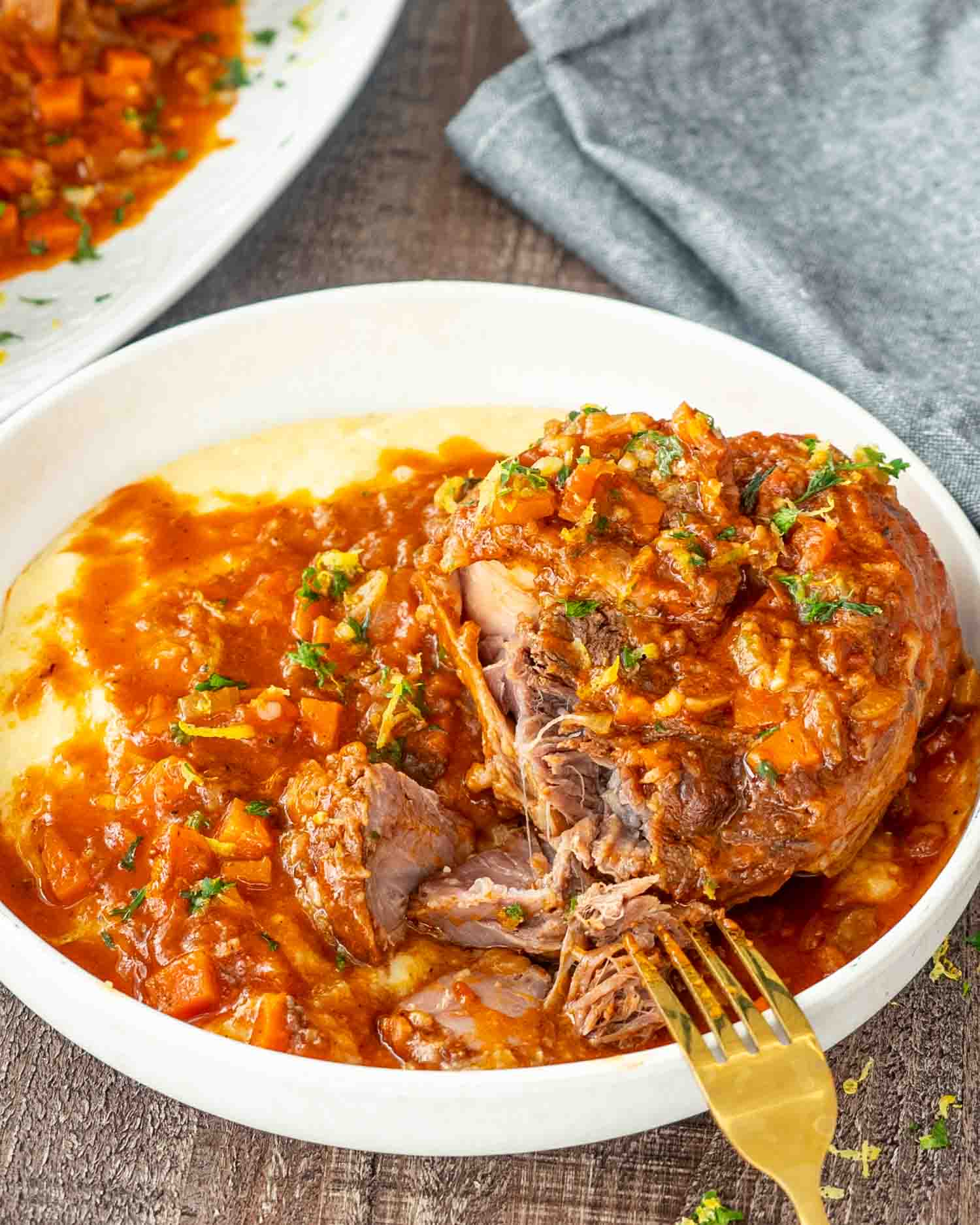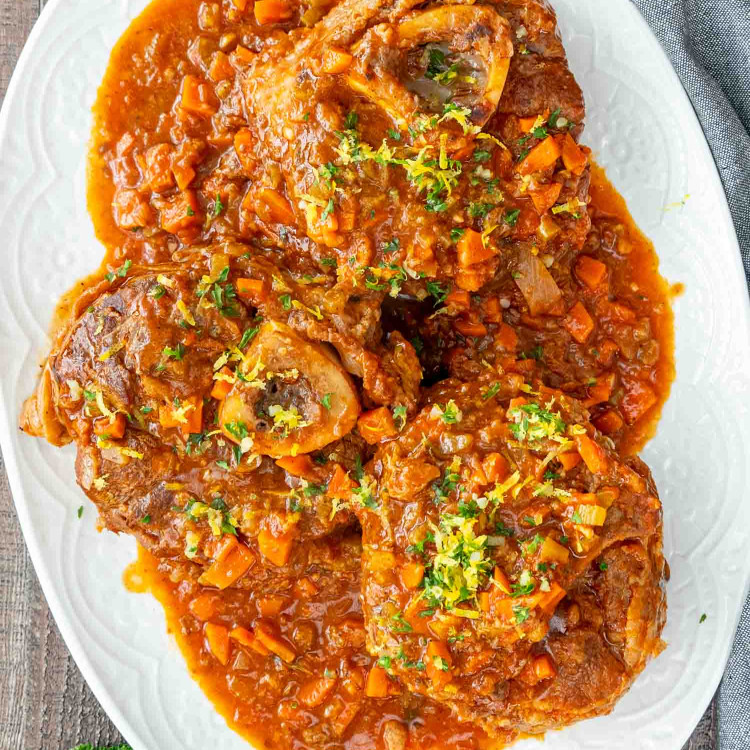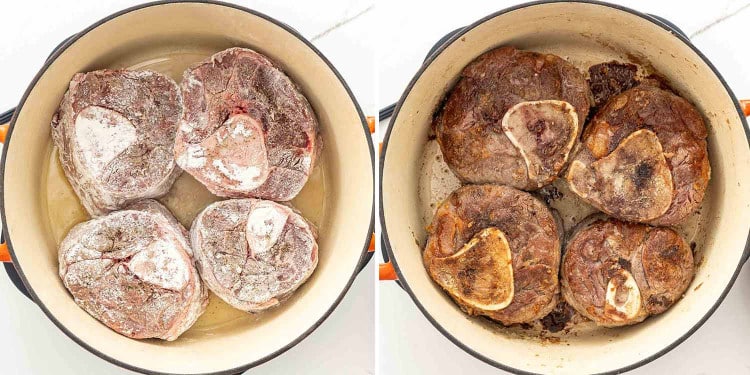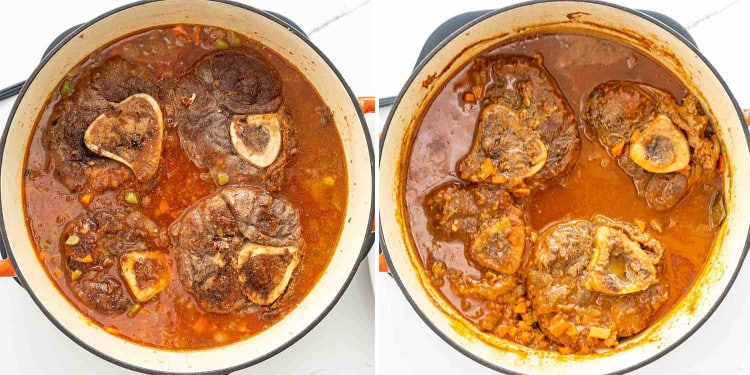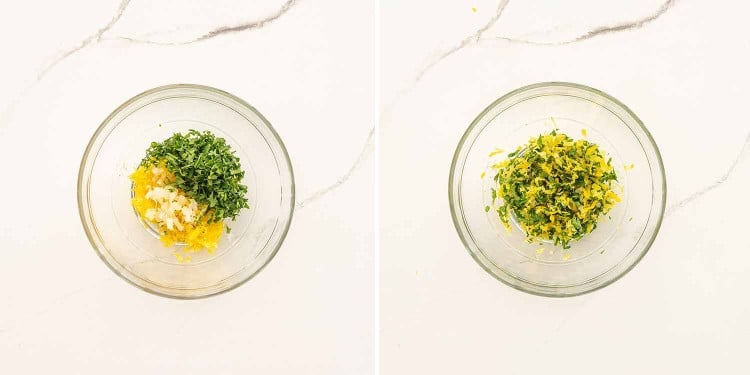What Is Osso Buco
Osso Buco is an Italian classic where tender veal shanks take center stage! The shanks undergo slow-cooking in a flavorful blend of white wine, tomatoes, and aromatic vegetables until the meat achieves melt-in-your-mouth perfection. Then finished with a sprinkle of zesty gremolata, it’s typically accompanied by a side of risotto, creamy polenta, or mashed potatoes.
Veal Shanks: Veal shanks are cut from the lower part of the leg and are known for their tenderness and rich, succulent flavor when cooked slowly. Look for shanks that are about 2 inches thick with a good amount of marrow in the bone, as this adds richness to the sauce. You can find veal shanks at most butcher shops or specialty meat markets. If you can’t find them, beef shanks are a good substitute. All-Purpose Flour: Lightly dredge the veal in flour to create a nice golden crust when browned. Mirepoix: A combination of chopped onions, carrots, and celery, also known as mirepoix infuses the sauce with flavor. Dry White Wine: The addition of a dry white wine such as Sauvignon Blanc, Chardonnay, or Pinot Grigio works to deglaze the pot and add complexity to the sauce. If you’re looking for an alcohol free substitute, use beef broth to deglaze the pan. Beef Broth: Serves as the braising liquid and imparts flavor as well. I always use low-sodium broth to control the saltiness of the finished dish. Crushed Tomatoes: Add a rich, tangy flavor and body to the sauce. Herbs: Bay leaves and fresh thyme add a subtle earthiness and herbal undertone to the sauce.
Lemon Zest: Forms the flavor base of the gremolata with a burst of citrusy brightness. Garlic: Freshly minced garlic adds an intense pungent and aromatic layer of flavor. Fresh Parsley: Contributes herbaceous freshness, that balances the lemon zest and fresh garlic.
This Italian dish is fairly easy to make. With a touch of patience and my step-by-step instructions, you can effortlessly bring this culinary masterpiece to life in your own kitchen. Pat the 4 veal shanks dry with paper towels. Season each shank with salt and pepper, then lightly dredge them in ¼ cup of all-purpose flour, shaking off any excess. Tip: Drying the shanks helps them brown better, creating a nice crust and locking in the flavor. In a large heavy-bottomed pot or Dutch oven, heat 3 tablespoons of olive oil over medium heat. Add the veal shanks, making sure not to overcrowd the pot. Brown each side for about 3-5 minutes or until they get a nice golden color. Remove and set aside. Tip: Browning the meat enhances the flavor and creates a rich base for the sauce. In the same pot, add 1 large chopped onion, 2 peeled and finely chopped carrots, and 2 finely chopped celery stalks. Cook until the vegetables are softened, about 5-7 minutes. Add 3 cloves of minced garlic and sauté for another minute. Tip: Cooking the vegetables in the same pot allows them to absorb the flavorful browned bits left from the veal. Pour in 1 cup of dry white wine, scraping the bottom of the pot to lift up the browned bits. Allow the wine to simmer and reduce by half. Tip: Deglazing with wine lifts the flavorful bits stuck to the bottom, enhancing the sauce’s depth. Add 14 ounces of crushed tomatoes, 1½ cups of low-sodium beef broth, 2 bay leaves, and 2 sprigs of fresh thyme to the pot. Stir well. Now, return the browned veal shanks to the pot, ensuring they are submerged in the sauce. Cover and let it simmer on low heat for about 1½ to 2 hours or until the meat is tender and falling off the bone. Tip: Slow simmering allows the flavors to meld together and the veal to become incredibly tender. While the veal is cooking, mix together 1 tablespoon of fresh lemon zest, 2 cloves of minced garlic, and 2 tablespoons of finely chopped fresh parsley. This is your gremolata. Tip: Gremolata adds a fresh and zesty finish that balances the richness of the sauce. Once the veal shanks are tender, discard the bay leaves and thyme sprigs. Plate each veal shank and spoon some sauce over the top. Sprinkle with gremolata before serving. Tip: Adding gremolata just before serving ensures it stays vibrant and fresh, adding a burst of flavor to each bite.
Storage
You can store leftover osso buco in an airtight container in the refrigerator for up to 3 days. To reheat, gently warm the dish on the stovetop over low heat. It’s also possible to keep leftovers in the freezer for up to 3 months. Then just thaw them in the refrigerator overnight before reheating.
Discover More Italian Dishes
Chicken Parmesan Creamy Italian Sausage Pasta Chicken Cacciatore Pasta Puttanesca Italian Chicken Sheet Pan Dinner
